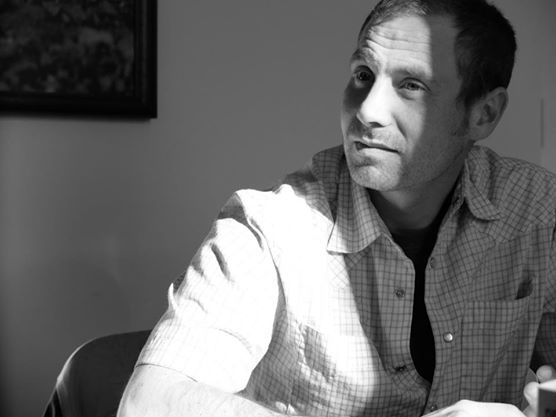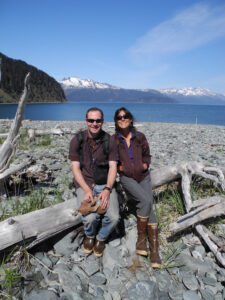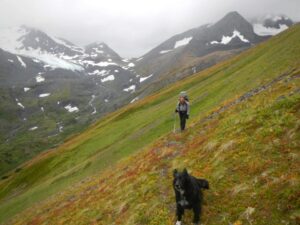
Brian Litmans’ Story: Pittsburgh to Pristine Alaska
Brian Litmans, Trustees for Alaska Senior Staff Attorney, works on climate change, public land management, wildlife and mining issues. Read his story:
Decades before I was born, Pittsburgh was a city shrouded by dirty, soot-filled skies—a city once known as the “City of Smoke” or “Hell with the lid off.” Pollution, mostly from the coking coal burned by the steel mills, was tolerated and accepted as a sign of progress. In the 1970s, as I grew up in Pittsburgh, the skies were less polluted but it was the result of a dying steel industry. The steel industry had no interest in cleaning up its act.
My exposure to “progress” and the outdoors came at a young age. My first field trip, in first grade, was to a Pennsylvania coal mine. We got to ride on the coal train, go into the tunnels and take a piece of coal home with us. It was the culture and norms of Pittsburgh at the time to respect the steel and coal industries.
Growing up, we knew never to swim in the Monongahela River, one of three rivers in Pittsburgh whose banks were home to several steel mills and coal-fired power plants. It was the industrial river. The Allegheny River wasn’t much better, but we took our chances on hot summer days. I can’t recall questioning parents or teachers about why it was okay to let a river die. It seemed like it was just a state of mind in Pittsburgh.

Brian and Amy Dalton taking a break during an annual beach cleanup in Resurrection Bay sponsored by the Resurrection Bay Conservation Alliance. Photo: Brian Litmans
Decades later, with a college degree, I saw two paths before me. One was to follow my interest in conservation biology. The other was to engage in environmental policy. I chose the latter, which lead me to Washington D.C., and then to the leading environmental law school—Lewis & Clark. While at law school, I saw how important the role of an environmental attorney is in protecting wild places, imperiled species, clean air and water, and addressing the most significant problem of our times, climate change.
The suite of environmental laws we know today came into existence in the late 1960s and through the 1970s—the Clean Air Act, the Clean Water Act, the Endangered Species Act—and have led to major improvements in the air we breathe, the water we drink, and better protections for the environment that surrounds us. But the laws alone have not been enough to ensure that we all live in a pollution-free environment and that our natural environment isn’t sacrificed for the sake of “progress.”
Environmental laws, without legal intervention to ensure that their purpose is met, can have a limited impact. Justice William O. Douglas, in a principal environmental case, spoke of the river as a plaintiff. He noted that,
before these priceless bits of Americana (such as a valley, an alpine meadow, a river, or a lake) are forever lost or are so transformed as to be reduced to the eventual rubble of our urban environment, the voice of the existing beneficiaries of these environmental wonders should be heard.
I chose to become a non-profit environmental attorney to represent the rivers, valleys, meadows and lakes, the wildlife and the communities that depend on and enjoy an unspoiled environment. I came to Trustees for Alaska in 2007 because there is so much on the line in Alaska. Year after year, there are ill-devised projects that have the potential to forever change the Alaska landscape. These projects threaten some of the world’s last wild places and have dramatic consequences for the way communities live with the land, today and into the future.
At Trustees, I work on a variety of important and pressing cases. The one case that really captures why I feel so fortunate to be a Trustees attorney is our work with clients fighting the proposed Chuitna Coal mine. This proposed coal mine would destroy miles and miles of salmon stream so the company can dig up more coal that will pollute our skies, our waters, our fish and further exacerbate climate change. It is a huge fight, years in the making. This type of case is the principal reason I became an environmental attorney and came to work at Trustees for Alaska. Without attorneys working with courageous, passionate and dedicated clients, King Coal is likely to win and we all will lose something incredibly valuable and irreplaceable.




